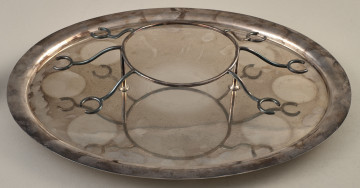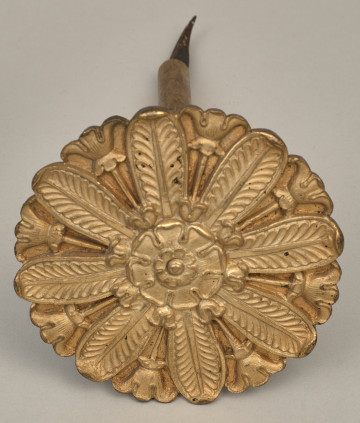
Tray
19th / 20th century
Castle Museum in Łańcut
Part of the collection: Goldsmiths
Tray for visiting cards, from the Museum collection, made of silver; Vienna made, from the end of the 19th/ beginning of the 20th centuries. The tray, shaped as a coat of arms, with a concave upper edge, to the ends of which a grip is attached, shaped as a bow. The tray centre is slightly concave, smooth, the edges profiled into five rolls, tied by bands at regular intervals. The same band-tied roll motif is found on the grip. On the tray base there are gilder’s marks. Visiting cards, little pieces of cardboard paper, usually with the first and last name, emerged already in the 15th century in China, the home of paper. The holding of such a visiting card was described by a special decree, and every public officer had to have one. The content of the visiting card was also precisely described (first and last name, position of the official, with the entirety on laid paper. In Europe, visiting cards gained popularity in times of Louis XIV, and in Russia during the reign of Catherine the Great. The first discovered printed name card stems from the 18th century; it was found in Germany. A new type of visiting card emerged in the 19th century, with the development of trade – the advertising card.
Dimensions
height: 18.1 cm, width: 16 cm
Object type
Goldsmithing
Technique
cast
Material
metal
Creation time / dating
Owner
Castle Museum in Łańcut
Identification number
Location / status

19th / 20th century
Castle Museum in Łańcut

1st half of the 19th century
Castle Museum in Łańcut

20th century
Castle Museum in Łańcut
DISCOVER this TOPIC
Museum of King Jan III's Palace at Wilanów
DISCOVER this PATH
Educational path